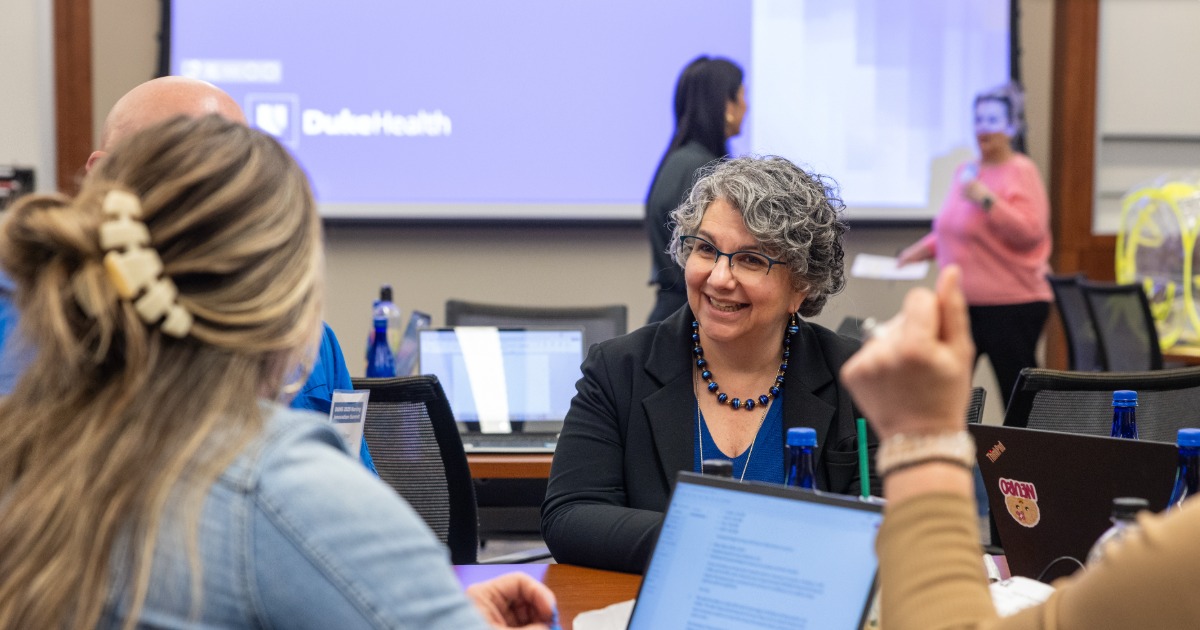
Dr. Matthew Anderson, SVP and chief physician executive for the North Carolina/Georgia division at Charlotte, North Carolina-based Advocate Health
Photo: Dr. Matthew Anderson
Advocate Health – the third-largest nonprofit health system in the United States, serving nearly 6 million patients – has had access challenges similar to those facing most other healthcare providers and patients.
THE CHALLENGE
The bottom line is there is a supply and demand mismatch where there are not enough clinicians – and visits with those clinicians – to meet the needs for all of those in the communities Advocate Health serves.
Part of that is because of a gap in the absolute number of clinicians needed to care for the health system's populations, part is due to how those clinicians are distributed geographically based on a variety of factors, and part is due to the historical methods of practice that have required a synchronous, in-person connection in order for patients to receive care and providers to be reimbursed for delivering it.
There are different challenges in rapidly growing communities and underserved communities but the access limitations and needs that result are real in both, said Dr. Matthew Anderson, senior vice president and chief physician executive for the North Carolina/Georgia division at Charlotte, North Carolina-based Advocate Health.
"Prior to recent technological advances, there simply weren't as many viable options for overcoming these gaps at scale, but as new tools and capabilities have grown they have opened new opportunities to create access and better address the mismatch between clinician supply and demand," he observed.
PROPOSAL
Advocate Health has a mantra its staff believe in deeply around this topic: "Care is care."
"It means that effective care delivery is not about the modality it's delivered by but is about the ability to link the needed clinical knowledge and resources to the patient at the right time as reliably as possible," Anderson explained. "To us this means we need to make care available for patients how, when and where they want and are able to receive it.
"Delivering on that goal is rooted in our ability to alter the requirement that patients and clinicians must be in the same physical location at the same time," he continued. "While we know that for some types of care, that alteration is not possible, we also know that for a lot of care it is."
Advocate believes that innovating in this way would increase accessibility and engagement to benefit patients, because it would create more front doors, closer to home, across more hours of service, and with greater speed and sustainability to help it make care connections with more people.
"This would reduce barriers to care, including transportation, difficulties getting off work or out of school, and the general inconveniences that sometimes get in the way of engaging with our care teams," he said.
MEETING THE CHALLENGE
Advocate's clinicians see a diverse collection of patients using a similarly diverse portfolio of telemedicine care delivery models.
"While the ages trend slightly younger, we see significant engagement from across the spectrum of patient ages, genders and clinical conditions," Anderson reported.
"The models themselves span a broad continuum and include access points that are fully virtual – for example, virtual primary care – in addition to some that are hybrids – for example, neighborhood care sites, school-based care and hospital at home models – where the clinician may be remote but there are members of our team who are with the patient in-person, facilitating and augmenting the interaction," he continued.
Within these models, clinicians are able to deliver care that can be synchronous or asynchronous, with the latter being used in certain cases where they can manage a condition or concern safely and effectively without having to be face-to-face at the same time.
"Our platform uses specific tools and capabilities that can be leveraged from a vendor, from our electronic health record or by other means," Anderson explained. "We use specific technologies to provide us with additional physical exam information and obtain accurate data about vital signs and other elements that can be monitored remotely.
"These are important tools for us to increase the amount and improve the accuracy of the information that we can exchange with patients," he continued. "As we provide more of this care, we are able to increase the number of interactions and conditions we can manage via our platform, which we believe increases the opportunities for better engagement and outcomes."
The success of these programs really goes back to delivering the care how, when and where people desire it and are able to access it, he added.
"These care models represent new access points, where you can get to us from your house, at your school, in your neighborhood, at work or sometimes in one of our physical locations – where we create the connection to a clinician who is not physically proximate to the patient's location," Anderson said. "Each of these programs creates connectivity between people and information, linking someone with a need to someone with the knowledge and ability to help meet that need."
RESULTS
Part of how Advocate Health measures success is in answering whether it is reaching more people with care more quickly.
"In the current state, we are seeing almost 2 million virtual visits annually and growing each year across our enterprise, so we are checking that box," Anderson reported. "At the individual program level, we recently saw our 20,000th Hospital at Home patient, which is an amazing milestone, and our Virtual Primary Care program is on pace to see more than 100,000 visits in the next 12 months.
"We also closely monitor who is receiving the care to ensure we are accomplishing our goal of access and opportunity for all," he continued. "As we do all of this, we also continue to closely monitor our clinical outcomes and patient experience measures. It is critical we are not only providing additional access, but also delivering superior quality and a superior experience for our patients."
In many cases those measures are identical to those Advocate Health monitors for its in-person care, and in others cases they are specific and unique to virtual modalities of delivery, he added.
On another front, the American Telemedicine Association recently gave the Advocate Health Virtual Services Group the ATA's Advancing Access to Virtual Care Award for fostering equitable access to inclusive, technology-enabled healthcare.
ADVICE FOR OTHERS
Anderson advises his peers at other health systems to start with Advocate Health's belief that "care is care."
"I think you have to start with that belief as you enter into this work and be open minded to doing things differently than you have in the past, because the work is not simple and it requires you to be 'all in.'" he said. "You have to start with acknowledging that the status quo is not sufficient or adequate and that its ability to serve some people well some of the time is not enough.
"Health outcomes should not be dependent on your Zip code, and, regardless of your Zip code, we know that healthcare access across the country right now is not where any of us would want it to be," he continued. "If you are entering into this work without wholeheartedly believing what I just said, then you are going to have difficulty succeeding at scale."
Beyond that, he encourages people to pay attention to their foundation.
"Infrastructure is critically important to this work, and investing in key technologies and structures that will enable work across specialties and different care delivery models will pay dividends in speed and consistency of experience for patients as programs are expanded," he explained.
"I would also encourage them to be clear about their strategy from the outset," he continued. "There can be a tendency to chase the proverbial shiny object and produce a number of interesting, potentially useful but disconnected programs that fragment care and don't deliver the outcomes your patients want and need, and aren't able to be scaled."
Anderson encourages peers to grow their base, design programs for scale, grow those to maximize impact and then move to the next priority.
"It takes a lot of discipline," he concluded, "but I think the outcomes will be more aligned to patient and health system needs when done that way."
Follow Bill's health IT coverage on LinkedIn: Bill Siwicki
Email him: bsiwicki@himss.org
Healthcare IT News is a HIMSS Media publication.
WATCH NOW: How to launch a healthcare AI project, per the VA AI chief


